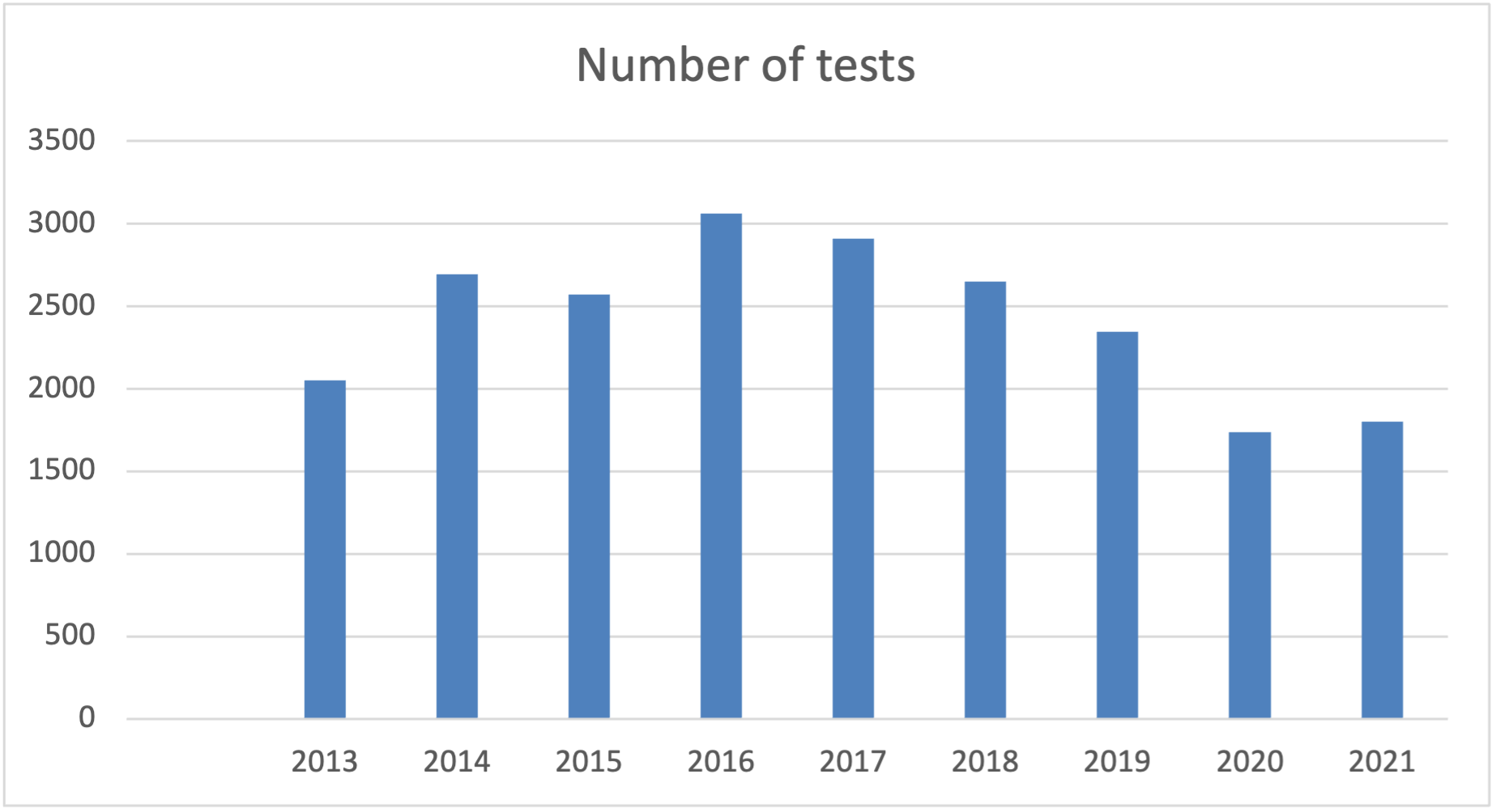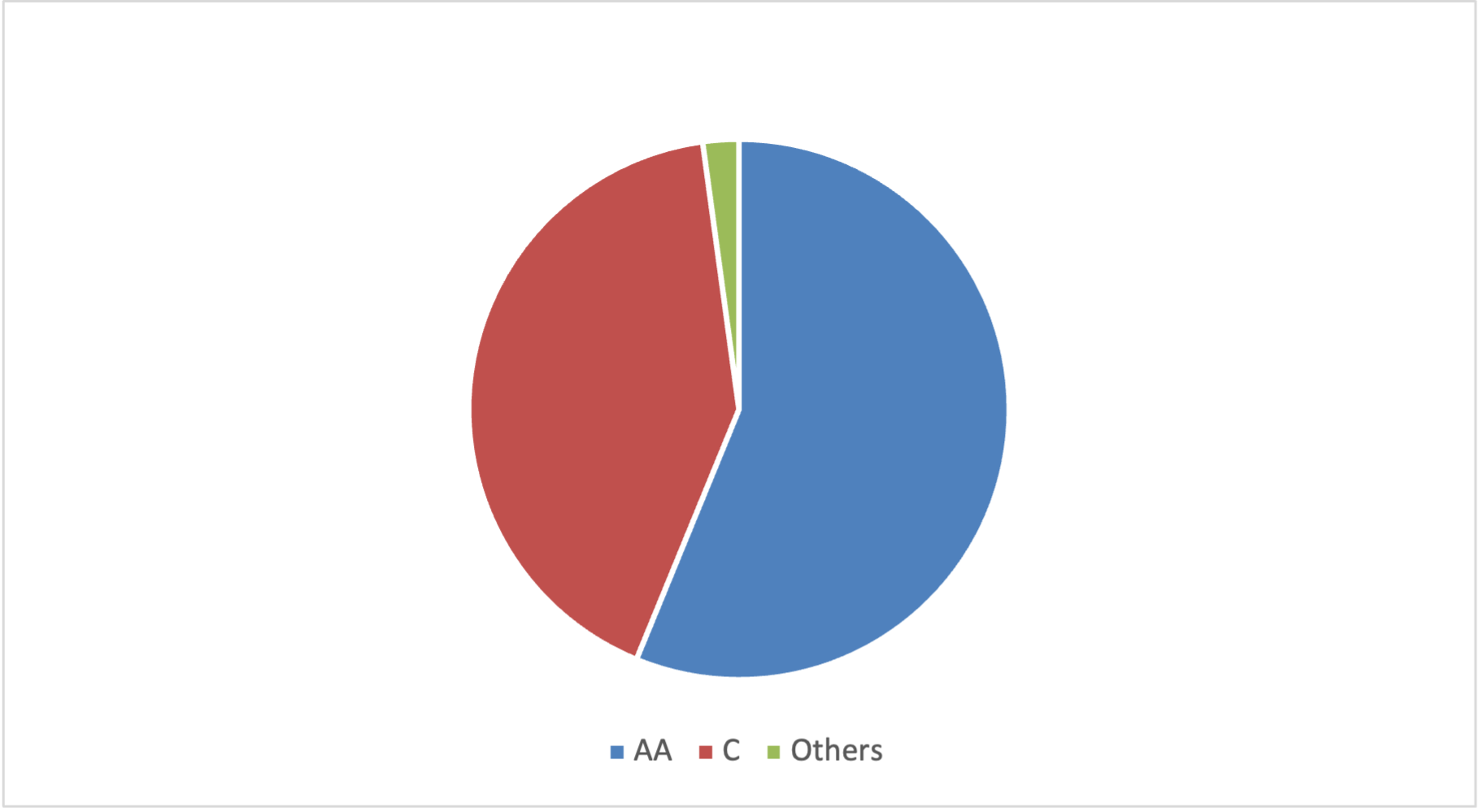Background: Vitamin B9, also known as folate, is a water soluble vitamin found in vegetables, fruits and animal products that plays a key role in purine and pyrimidine synthesis, nucleoprotein synthesis and erythropoiesis. Deficiency can result from malabsorption, anti-epileptic and methotrexate use, pregnancy, hemolytic anemic, and alcoholism and is implicated in neural tube defects. Signs of deficiency include megaloblastic anemia and oral ulcers. B12 and folate deficiencies are closely intertwined but can be distinguished by the lack of neurological symptoms in folate deficiency. Additionally, MMA levels are elevated in B12 deficiency while homocysteine levels are elevated in folate deficiency. The purpose of this study is to look at the frequency of ordering folate testing at UMMC and frequency of abnormal tests.
Methods: We performed a retrospective observational study of all inpatients aged 18 and over who received the Serum folate level at UMMC from January 1, 2013 to December 31, 2021. Patient Cohort Explorer was used to obtain de-identified patient data from EPIC. We obtained the data for hospitalized patients on whom the serum folate level was ordered. Microsoft Excel was used to do the calculations.
Results: Serum folate level was ordered 21852 times on 18346 patients during 17664 hospital encounters from January 1, 2013 to December 31, 2021. 11,161 tests were done in females, and 10,688 tests were done in males. 12,136 tests were done in African Americans, and 8998 tests were done in Caucasians, and 465 in others. The median age of testing was 60. 20628 patients had the test done only once per hospital encounter while 578 patients had the test done twice, and 31 had the test done 3 times. On average 2425 tests were done per year at UMMC during the study period with a maximum of 3065 in 2016 and a minimum of 1738 in 2020. Of the 21832 tests, 3086 (14.1%) came back abnormal. 909 (4.16%) came back with a level lower than the lower cut off value. 2177 tests (9.96%) came back with a level over the upper limit.
Conclusions: To our knowledge this is the largest data single center sample with Serum folate levels in adult hospitalized patients. Interestingly close to one in twenty four samples that was tested for folate level was lower than the minimum cut off and one in ten samples had a level greater than the upper limit.


